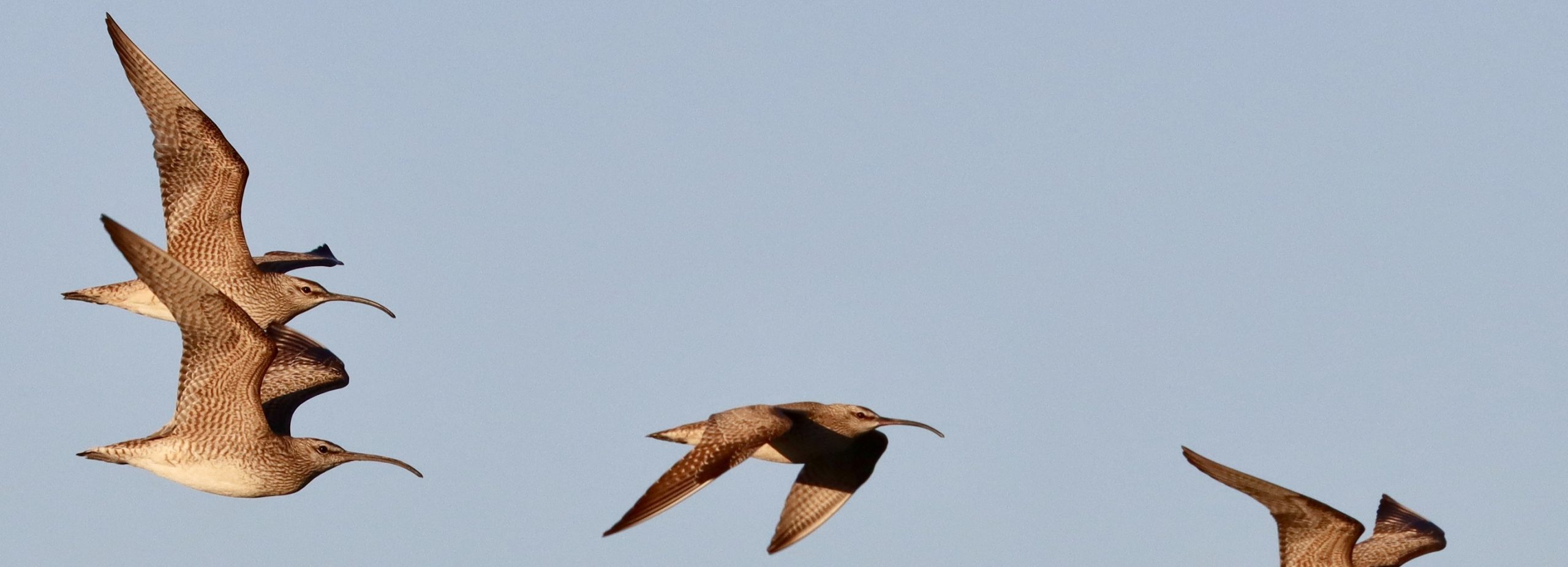Manomet and our team of partners have spent recent years identifying focal areas for Whimbrel conservation efforts and building a monitoring network in the Atlantic Flyway. In April 2021, Brad Winn and Alan Kneidel headed to Texas and Louisiana to expand this network to the Gulf coast. At the same time, Abby Sterling and her partners coordinated ongoing surveys in the Georgia Bight. We are pleased to report that the 2021 field season was a success, and lots of Whimbrels were counted!
Why?
Why are we so focused on the spring staging areas for Whimbrels? In the conservation field, monitoring population size and trends are essential to understanding the cause-effect links between management actions and population response. But, collecting information about shorebird populations can be quite the challenge.
For three-quarters of the year, Whimbrels are largely inaccessible. During the breeding season, they are thinly dispersed throughout the vast Arctic and sub-Arctic tundra. A large percentage fly straight out over the Atlantic Ocean during fall migration, without ever passing through the lower 48 states. During the winter months, Whimbrels are dispersed along the Caribbean and northern South America coasts, areas that are remote and difficult to survey. Therefore, the only time to do population-level headcounts of Whimbrels is at spring staging areas, and particularly at the communal nocturnal roost sites within these staging areas. There may be just a few of these roosts in a region, pooling birds from up to 40 miles away and numbering thousands of birds. In addition to being the best place to count the birds, identifying these key sites also helps us direct conservation action to them.





 Back to all
Back to all